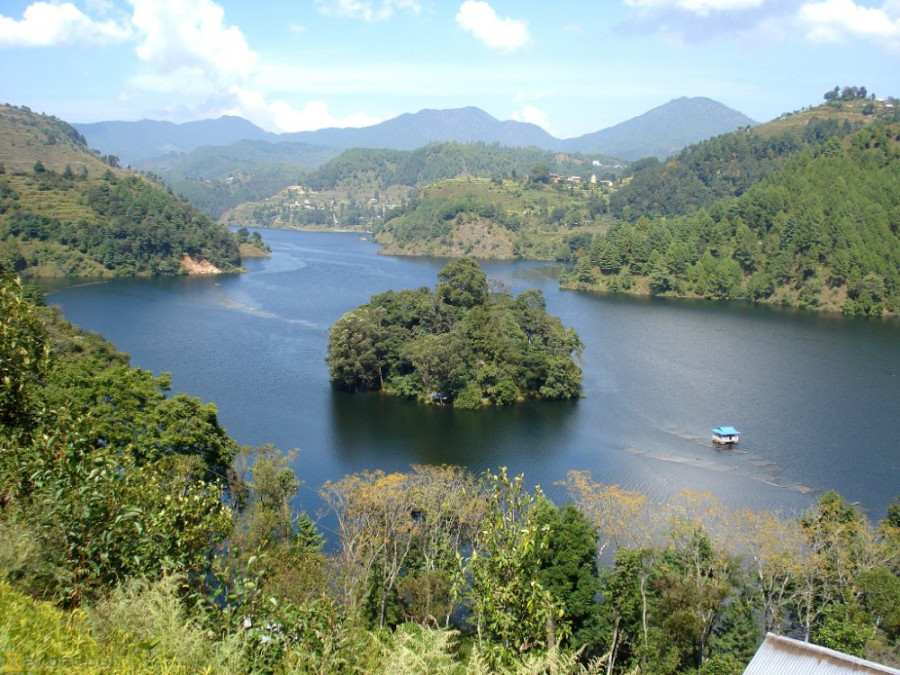Money
Three days of nonstop torrential rain tops up Kulekhani reservoir
Nepal Electricity Authority cuts down power imports from India to 150 MW from 400 MW.
Prahlad Rijal
The torrential rain that fell nonstop for three days last week topped up the Kulekhani reservoir in mid-July for the first time in living memory. Formed by Kulekhani dam, the lake located 20 km southwest of Kathmandu supplies water to the Kulekhani I and II hydropower projects.
With the reservoir filled to the brim, and the two plants churning out electricity feverishly, the Nepal Electricity Authority has been able to cut down power imports from India to 150 MW from 400 MW.
Officials said the water level in the Kulekhani reservoir rose by 20 metres in just four days. Usually, the water in the lake would reach this level only in October with snowmelt flowing down from the Himalaya.
“The monsoon has just started; and the reservoir, which would fill up only in October after the snow started melting, has hit peak storage three months in advance this year,” said Kulman Ghising, managing director of the Nepal Electricity Authority. “Earlier, the plants used to remain shut during the monsoon to conserve water, but we have operated the plants at full capacity and cut back on imports from India.”
According to Ghising, both hydel plants fed through the reservoir are producing their maximum output of 92 MW as they have been running at full throttle since Monday to prevent overflowing and possible dam burst. The water level recedes at a rate of 2 cm per hour even when the plants are run at full capacity.
The Nepal Electricity Authority has requested communities downstream to remain alert as the utility will have to open the dam's flood gates in case the water rises any higher. “If the spillway and reservoir cannot hold the flow of water even with the turbines running at full capacity, we will have to open the dam which will result in floods in the Bagmati River,” said Ghising.
The state-owned power utility is now importing only 150 MW from the Dhalkebar-Muzaffarpur cross-border transmission line against the normal import of around 400 MW.
According to the Nepal Electricity Authority, the 60 and 32 MW Kulekhani plants are only operated to fulfill power demand during the dry season when the country witnesses a drop in generation from run-of-the-river schemes. The turbines are also switched on for voltage improvement and system stability.
With the monsoon raging and floods wreaking havoc across the southern plains, the country’s total power off-take has dipped to 600 MW from the normal demand of 1,250 MW as demand from the farming sector has gone down along with a decline in cooling requirements from domestic consumers.
With the Kulekhani reservoir at peak storage, power imports in the upcoming months and the festival season when demand spikes are expected to be less than in previous years. As of Monday, state-owned power plants were churning out 457 MW and independent schemes were producing 469 MW. Electricity imports stand at 150 MW, according to the Nepal Electricity Authority.
All 23 state-owned power plants except one unit at the Kali Gandaki powerhouse are fully operational and producing 457 MW. Three private plants—25 MW Upper Modi, 22 MW Bagmati and 6 MW Chaku Khola—are out of commission due to structural damage caused by rain and floods.
***
What do you think?
Dear reader, we’d like to hear from you. We regularly publish letters to the editor on contemporary issues or direct responses to something the Post has recently published. Please send your letters to [email protected] with "Letter to the Editor" in the subject line. Please include your name, location, and a contact address so one of our editors can reach out to you.




 10.12°C Kathmandu
10.12°C Kathmandu














